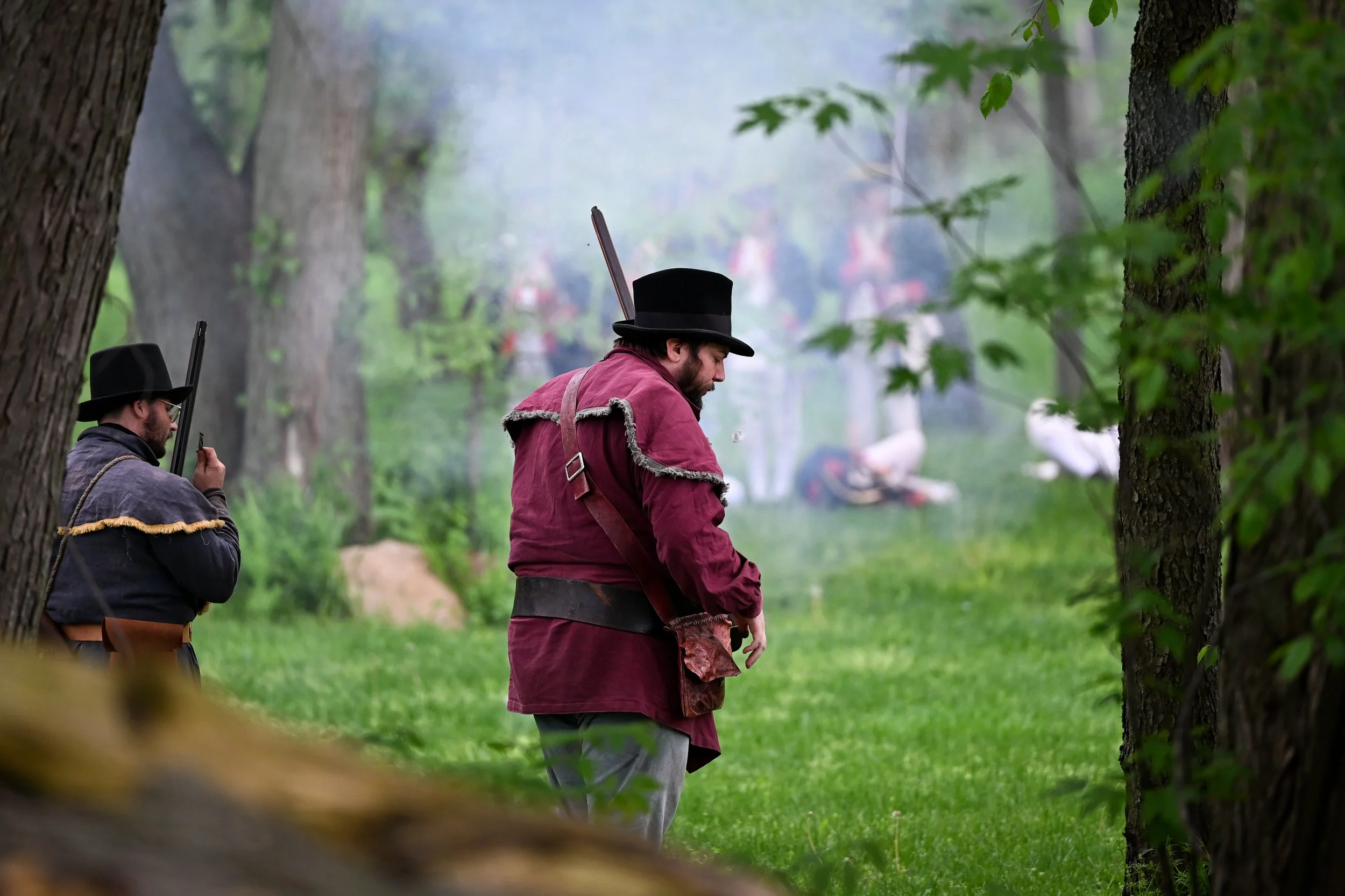The History of Five Medals
On August 3, 1795, at Fort Greenville, Ohio Country, a treaty of vital importance was signed. Present were key players in the Western theater of operations. “Mad” Anthony Wayne, Little Turtle, William Henry Harrison, Blue Jacket, William Wells, White Pigeon, William Clark, Topinabee, Meriwether Lewis, Winamac, and a well-regarded chief of the St. Joseph River Band of Potawatomi named Wonongaseah, or Wa-weeg-she, as his name was scribed onto the treaty next to his mark.
While the treaty ceded large tracts of land to the U.S. government, the Native presence remained very strong and the tribal leaders, a.k.a. “principal chiefs” were crucial participants in future events. None more than Wonongaseah, who, as early as 1795 was known by names in several languages that translated as “coin,” “ornament,” or, as he became generally known, Five Medals.
Five Medals lived on the Elkhart River, South of present-day Goshen, IN and Northwest of present-day Ligonier, IN. He traveled with Little Turtle, first to Philadelphia in 1796, where he met with President Washington, and again in 1801 to Washington D.C., where he met with and delivered an oration to President Jefferson.
Stationed at Fort Wayne and fulfilling government roles in the area, concurrent to Five Medals’ presence were both William Wells and John Johnston. There is a fascinating story of politics and rivalry surrounding these two, finally being resolved by virtue of Johnston’s transfer to Piqua, OH in 1811 and Wells being killed at Fort Dearborn on August 15, 1812. The key point for area residents is that a general route from Fort Wayne to Five Medals village, other villages in the Northern part of the territory, and the gateway to the Great Lakes fur trade all passed across the ground on which Stone’s Trace stands today. The trail would have been well worn by both the Native-Americans and European-Americans engaged in commerce and tribal and agency business.
The events put into motion by the Battle of Tippecanoe on November 7, 1811 and the battle at Fort Dearborn on August 15, 1812 swallowed the entire region. Fort Wayne stood at the center, as it had since its early days as Fort Miamis, and by virtue of its proximity to Kekionga. Five Medals found himself caught in a storm from which he could not extract himself and which ultimately placed him at the Siege of Fort Wayne in September, 1812. General Wm. H. Harrison marched from Newport Barracks, relieved the siege and immediately dispatched troops to conduct punitive raids on the participating Native villages. A spectator standing on the spot where Stone’s Trace now exists, would have witnessed Potawatomi warriors traveling to Fort Wayne in early September, and their return, followed by fast-moving troops commanded by William Wells’ brother, Colonel Samuel Wells. On September 14, 1812, Five Medals’ village was raided and burned to the ground.
Nine months later, on June 10, 1813, future Vice-President of the U.S. and soon-to-be proclaimed hero of the Battle of the Thames, Kentucky Militia Colonel Richard Mentor Johnson lead a command across this same ground on a return raid against Five Medals village. A day later, he also hit White Pigeon’s town.


